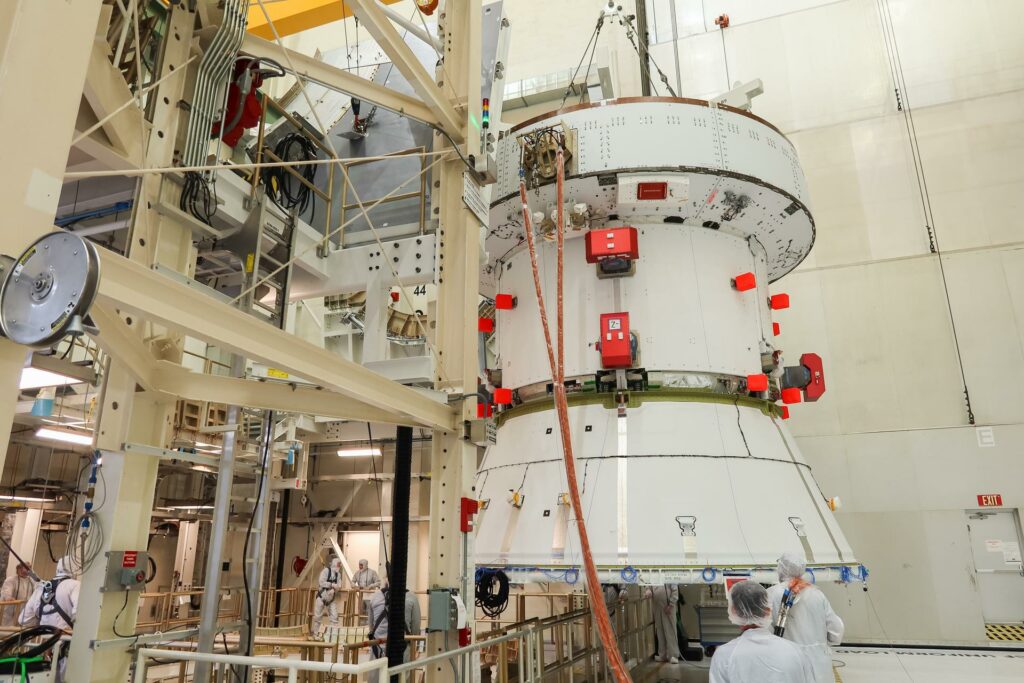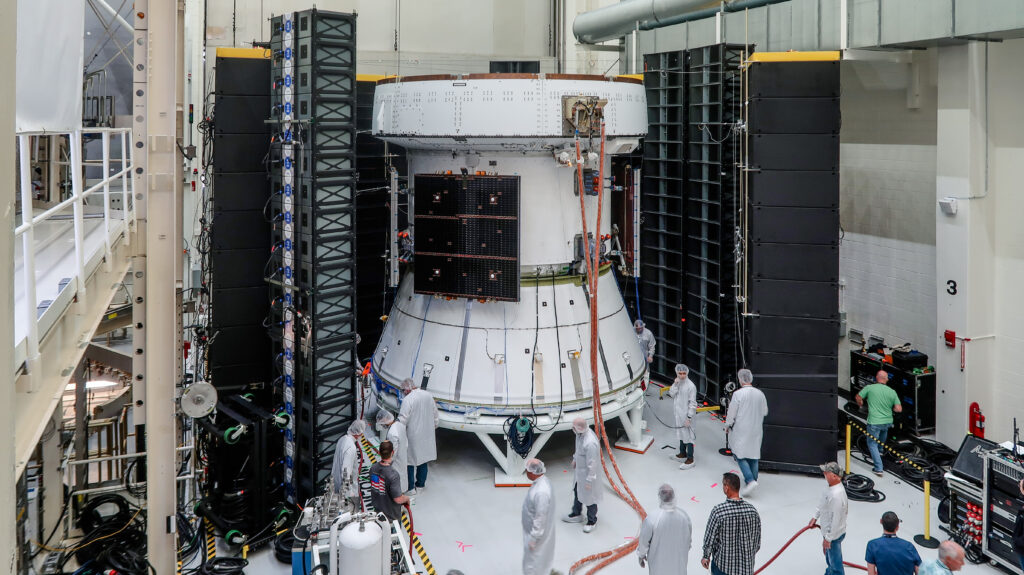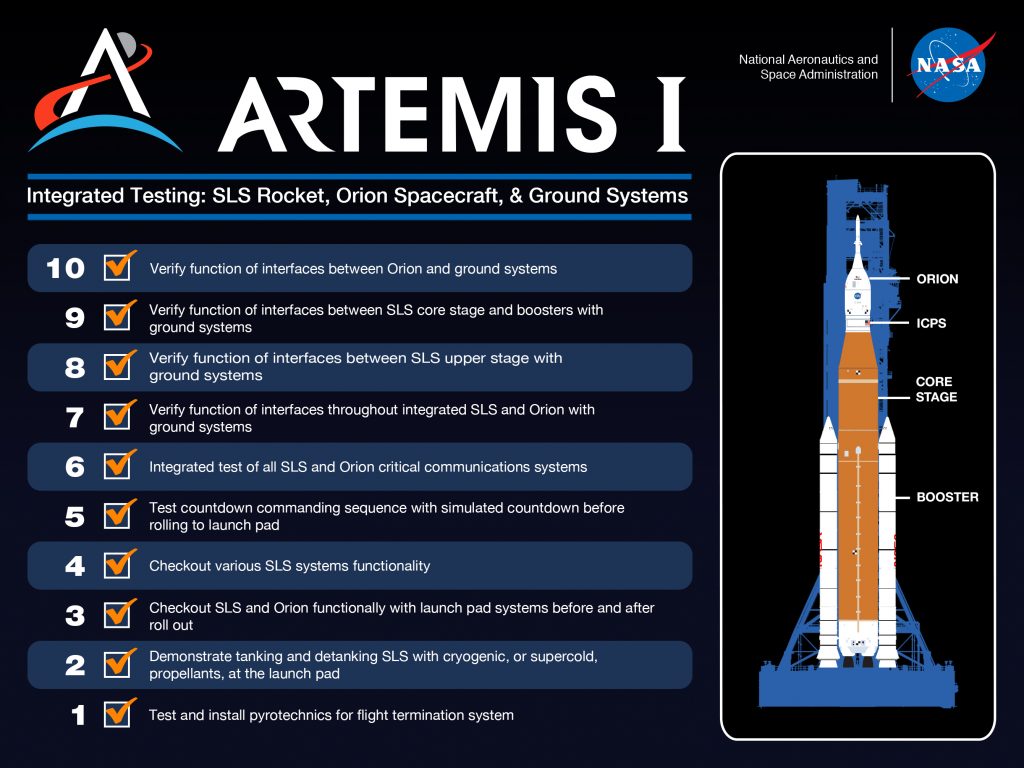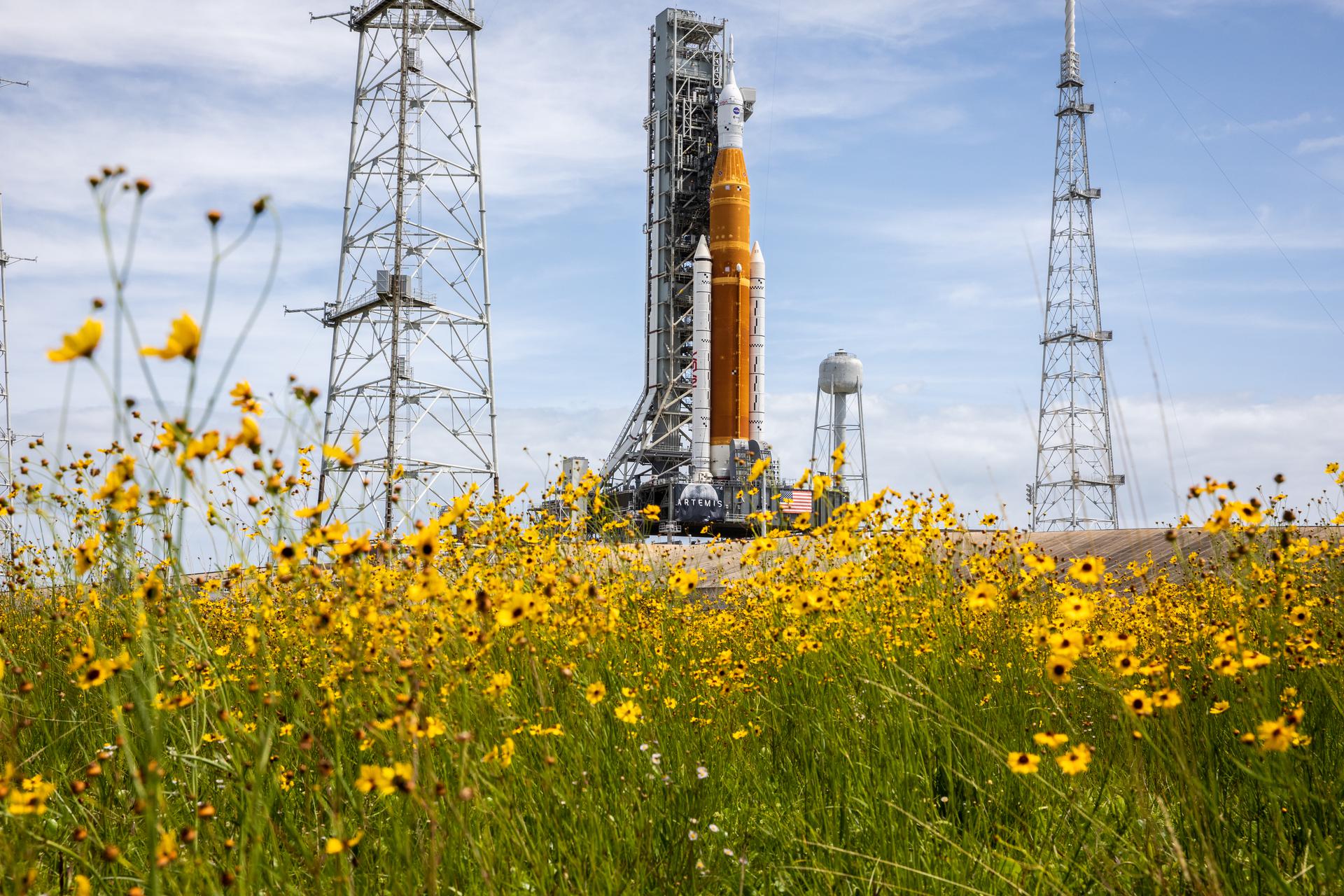
Teams are performing final checkouts of the Orion spacecraft’s service module before integrating the crew and service modules for Artemis II, the first Artemis mission with crew. In parallel, technicians from Airbus will conduct inspections of the solar array wings following the successful completion of service module acoustic testing in May, which ensured the service module can withstand the speed and vibration it will experience during launch and throughout the mission. During the inspections, each of the four panels will be fully redeployed and reexamined. The crew module also will undergo acoustic testing ahead of joining with the service module.
Provided by ESA (European Space Agency), the service module is the powerhouse that will fuel, propel, and provide in-space maneuvering capability, and is responsible for life support commodities such as water and breathable air for astronauts onboard Orion in support of future Artemis missions.
View additional imagery of the service module’s move to the final assembly and system testing cell.




